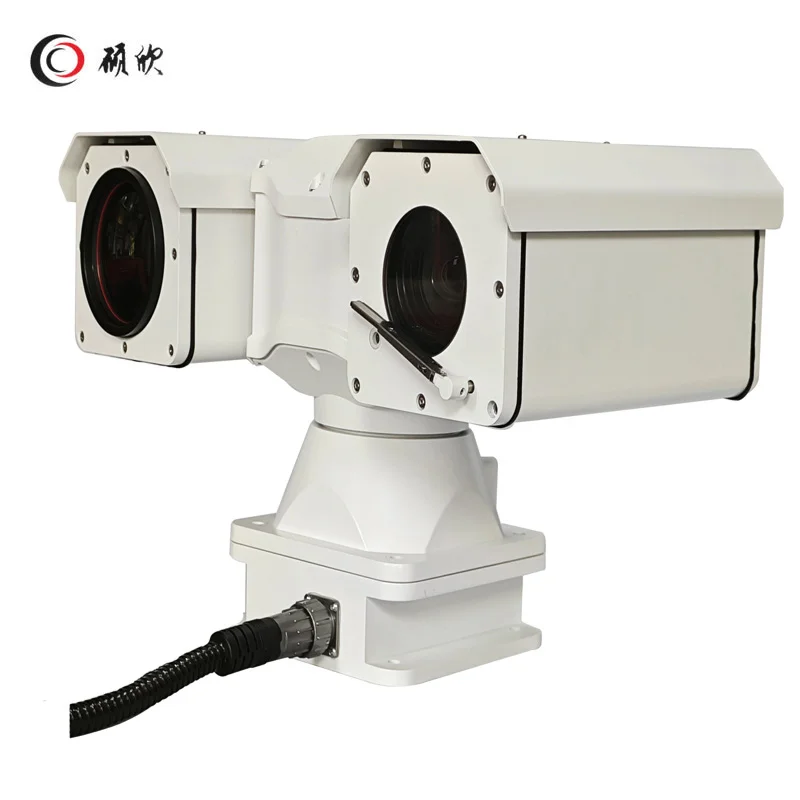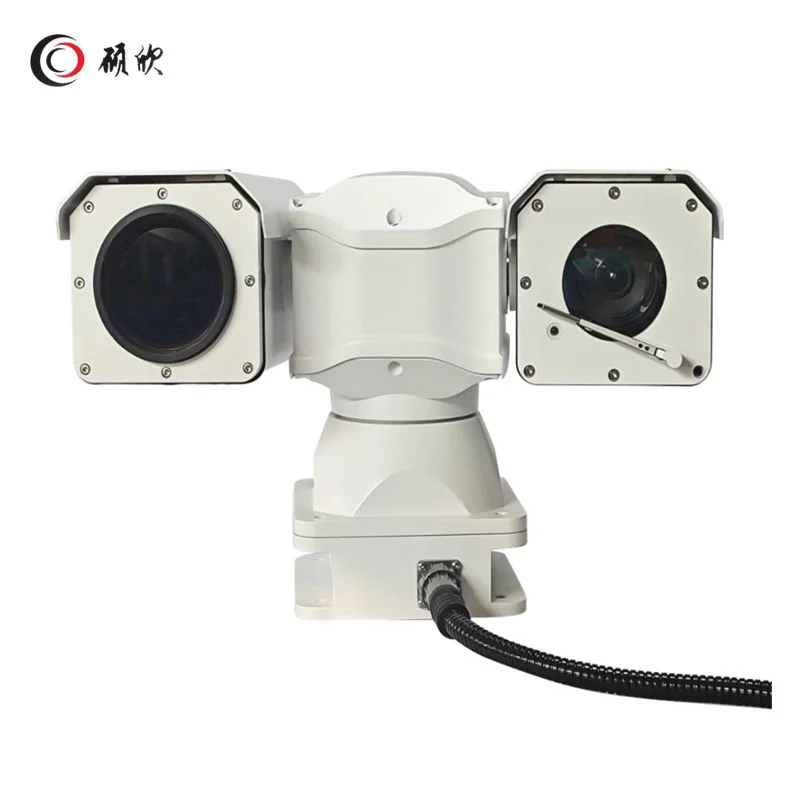PTZ 카메라는 멋PTZ 카메라는 PTZ 카메라는 집, 상점 또는 공공공 장소에서 침입자를 잡을 수 있는 슈퍼 도구입니다.그들은 움직임 센서, 똑똑한 추적, 모모모션 센서, 이이이이러한 연결을 가지고 있습니다.이 카메라는 ONVIF와 RTSP와 같은 규칙을 사용하여 경고를 통해 컴퓨터를 빠르게 핑합니다.밝고 명확한 사진, 야간 시력, 강력하고 날씨 방지적인 구조로 PTZ 카메라는 잘못된 경보를 줄입니다.그들은 웹 인터페이스를 통해 빠르고 유용한 통지를 보내고 있습니다.Shuoxin의 기어는 맞춤형 경고 영역, 스마트 AI 트릭 및 많은 장소에서 확고한 안전을 위한 클라우드 옵션을 제공합니다.
PTZ 카메라란 무엇이며 감시에서 어떻게 작동합니까?
PTZ 카메라는 Pan-Tilt-Zoom의 약자입니다.그것은 옆으로, 위로 또는 아래로 움직일 수 있으며 거리에서 그것그것을 그것그것을 그것그것은 그것그것을 그것그것은 멀리 떨어질 수 있습니다.이러한 카메라는 주차장, 학교 근처 또는 안장 경계와 같은 큰 공간을 문제없이 처리합니다.
안쪽 PTZ 카메라에는 왼쪽, 오른쪽, 위 또는 아래로 돌리는 모터가 있습니다.특별한 특별한 특특특별한 특특별한 특특별한 특특별한 특별특별한 특별한 특별별한 특특별한 특별특별특별한 특별특별한 특별스마트 프로그램은 그들이 움직임을 추구하거나 설정된 장소로 돌아가도록 도와주며, 넓은 지역을 보는 데 멋지게 만듭니다.
어떤 특징이 PTZ 카메라를 침입 감지에 좋게 만드는가?
PTZ 카메라는 장소를 안전하게 유지하는 깨끗한 기능을 가지고 있습니다.그들의 팬-그들그들그들의 그들그들그들의 그들그들팬-그들그들팬-그들그들의 그들그들의 팬-그들그들의 그들그들의 그들의 팬 팬-그들그들의 그들의 팬팬-그들그들의 그들팬팬 팬-여기 그들이 제공하는 것입니다:
- 경로를 설정하면 카메라가 특정 지점을 스스로 확인할 수 있습니다.
- 고화질 사진은 사람들이나 사물에 대한 명확한 시각을 보여줍니다.
- 적외선 야간 시력은 어두운 속에서 볼 수 있습니다.
- 날씨 방지 구조는 외부에서 카메라를 안전하게 유지합니다.
MarketsandMarkets의 2023년 보고서에 따르면 AI 모션 탐지를 가진 PTZ 카메라는 일반 고정 카메라보다 최대 40%까지 거짓 경보를 낮추고 있습니다.그들은 다른 움직이는 물질과 인간을 구별할 수 있습니다. (출처: MarketsandMarkets, “비디오 감시 시장 보고서 2023, ” www.marketsandmarkets.com)
이러한 기능은 PTZ 카메라를 활성 보호기로 만듭니다.위험을 감지하고 빠르게 행동합니다.
PTZ 카메라는 어떻게 모션 트리거를 사용하여 침입자를 발견합니까?
모션 센싱은 마음의 침입 경고PTZ 카메라는 선택된 지역에서 움직임을 알아냅니다.그런 다음 경고를 보내고 있습니다.비디오 프레임 사이의 픽셀 변화를 살펴보십시오.변화가 크다면 이동으로 간주됩니다.
보안 산업 협회 (SIA) 의 2024년 보고서에 따르면 고급 모션 감지를 갖춘 PTZ 카메라는 테스트에서 주변 침입의 95%를 잡습니다. (출처: 보안 산업 협회, “2024 감시 기술 추세, ” www.securityindustry.org)
이것은 가장자리를 보호하는 데 좋습니다.설정된 선을 넘어서는 어떤 이상한 움직임이 경보를 발생시킵니다.카메라는 움직임에 카카메라를 스카카메라를 카카메라를 카카메라로 카카메라를 카카메라가 스카카카메라를 움직이고 카카카메라이것은 무슨 일이 일어나고 있는지에 대한 명확한 증거를 잡고 나중에 저장합니다.
정확한 침입 감지에 스마트 추적이 중요한 이유는 무엇입니까?
스마트 추적은 침입 감지를 향상시킵니다.PTZ 카메라가 자체로 움직이는 것을 따라갈 수 있습니다.움직임이 나타나면 카메라가 잠금됩니다. 다음으로, 그것은 그것의 팬을 움직이고, 기울이고, 물물물체를 볼 수 있도록 동동작합니다.
Frost & amp;의 2023년 연구Sullivan은 AI 기반 스마트 트래킹을 갖춘 PTZ 카메라가 비 AI 시스템에 비해 거짓 경보를 35% 줄였다고 지적합니다.이것은 경고를 더 신뢰할 수 있습니다. (출처: Frost & Sullivan, “Global Video Surveillance Trends 2023, ” www.frost.com)
자동 초점 유지 빠르게 움직이는 침입자 날카로운.이것은 이이이러한 점이나 작은 동물과 같은 것들로부터 잘못된 경고를 줄입니다.따라서 당신이 얻는 경고는 더 정확하고 유용합니다.
PTZ 카메라는 기존 주변 보호 시스템과 작동할 수 있습니까?
예, PTZ 카메라는 다른 안전 도구와 잘 협력합니다.대부분의 좋은 PTZ 카메라는 적외선 적적외선 대대대부분의 적외선 대대부분의 PTZ 카메라는 포트와 규칙을 사용하여 적외선 대적적적외선 광선이나 대부분의 대부분의 좋
이들과 결합되면 카메라는 더 큰 안전망에 연결됩니다.예를 들어, 예리 센서가 문제를 발견하면 PTZ 카메라에게 즉시 거기를 찾아보라고 말합니다.이것은 침입자가 더 나아가기 전에 중요한 비디오를 캡처합니다.
카메라에서 컴퓨터 시스템에 실시간 경보가 어떻게 전송되나요?
움직임이나 침입이 발생할 때 PTZ 카메라는 컴퓨터에 빠르고 실패없이 알려야합니다.
어떤 프로토콜이 카메라와 PC 사이의 통신을 쉽게 만드는가?
같은 규칙 ONVIF는 (네트워크 비디오 인터페이스 포럼 열기) 보안 장치가 부드럽게 이야기하도록 하십시오.RTSP(Real-Time Streaming Protocol)는 네트워크를 통해 비디오를 잘 전송합니다.TCP/IP는 홈 네트워크나 온라인에서 카메라에서 컴퓨터로 데이터를 이동하는 주요 방법입니다.
운동이 감지된 후 컴퓨터에서 경고를 어떻게 볼 수 있습니까?
컴퓨터의 특별한 소프트웨어는 움직임이 발생할 때 경고를 표시합니다.이들은 라이브 비디오 또는 빠른 스이이창으로 이이이동합니다.일부 설정은 화면을 변경하지 않고 즉시 순간을 재생할 수 있습니다.이것은 상황이 심각하게 될 때 시간을 절약합니다.
실시간 침입 경보를 위해 어떤 시스템 설정이 필요합니까?
PTZ 카메라에서 원활한 경보를 받으려면 컴퓨터와 네트워크가 준비되어야 합니다.
모니터링 PC에 어떤 하드웨어가 있어야 합니까?
컴퓨터에는 적어도 인텔 i5 프로세서 또는 유사한 것, 8GB 메모리 및 1TB 스토리지가 있어야 합니다.비디오 피드를 많이 보면 별도의 그래픽 카드가 편리합니다.두 개의 모니터는 모든 것을 더 잘 지켜보도록 도와줍니다.
네트워크가 왜 그렇게 중요합니까?
좋은 모니터링은 견고한 네트워크가 필요합니다. 속도와 대역폭이 중요합니다.가능한 경우 유선 연결을 위해 Cat6 이더넷 케이블을 사용하십시오.또한 라우터의 서비스 품질 (QoS) 설정을 조정하여 PTZ 카메라에서 비디오 데이터를 먼저 넣습니다.
스마트 기능으로 신뢰할 수 있는 침입 감지 솔루션을 제공하는 사람은 누구입니까?
자동 추적, AI 스마트, 날씨 방지 구조, 야간 시각과 같은 최고 수준의 감시를 위해, Shuoxin의 제품 좋은 선택입니다.그들은 가정, 비즈니스 또는 공공 공간을 위해 만들어졌으며 PC 모니터링과 함께 훌륭하게 작동합니다.
Shuoxin 카메라 웹 인터페이스는 PTZ 카메라와 쉽게 연결됩니다.스스스스스스스스스스스스스스스스스스스스스스스스스스스스스스스스스스스스스스스스스스스스스스스스스스스스스스스특별한 장소를 보호하든 Shuoxin의 똑똑한 도구는 다른 요구에 맞습니다.폭풍이나 어두운 밤과 같은 거친 날씨에서 잘 작동합니다.
PC에서 침입 경보를 위한 Shuoxin PTZ 카메라를 어떻게 설정합니까?
Shuoxin PTZ 카메라를 설정하는 것은 PC 사용자를 위해 구축된 웹 인터페이스로 간단합니다.

감지 영역을 설정하기 위해 어떤 단계를 따라야 합니까?
Shuoxin 카메라 웹 인터페이스를 열어 시작하십시오.카메라를 IP 주소로 추가합니다. "알람 설정"으로 이동하고 카메라의 보기의 주요 영역에 상자를 그리고 감지 영역을 만들십시오.가짜 경보를 건너완료되면 이러한 영역의 모든 움직임이 컴퓨터에 빠른 경고를 보냅니다.
당신이 좋아하는 경고 유형을 선택할 수 있습니까?
예, Shuoxin 카메라 웹 인터페이스는 경고가 표시되는 방법을 선택할 수 있습니다.PC 스피커, 라이브 비디오를 가진 라라이브 창 또는 나중에 확인하기 위해 저장된 로그를 통해 사운드 경보를 받을 수 있습니다.각 사건이 얼마나 심각한지에 따라 가장 잘 작동하는 것을 선택합니다.
스마트 기능은 추가 가짜 경보없이 보안을 어떻게 향상시킬 수 있습니까?
AI 도구는 인간, 차량, 동물 또는 그림자를 분류합니다.이것은 거짓 경보를 줄이기 때문에 실제 위험에 대해서만 들을 수 있습니다.또한 데스크톱 앱은 어디서나 라이브 피드를 볼 수 있습니다.이것은 여러 장소를 감시하거나 떨어져 있을 때 체크인 하는 데 완벽합니다.
어떻게 당신의 필요에 맞는 올바른 PTZ 카메라 모델을 선택해야합니까?
최고의 PTZ 카메라를 선택하는 것은 몇 가지 중요한 것에 달려 있습니다.
모델을 선택할 때 어떤 성능 특징을 고려해야 합니까?
광학 광학 광광학 광광광학적 광광광학적 광광학적 광광학적 광광학적 광광학적 광광광학적 광광광광학적 광광광광학적 광광광광광학적 광광광광광광학적 광광광학적 광광광학적 광광광광학적 광이것은 낮이나 밤 설정에서 얼마나 멀리 볼 필요가 있는지 중요합니다.또한 카메라가 NVR 또는 VMS와 ONVIF를 통해 작동하는지 확인하십시오.Shuoxin의 PTZ 카메라는 시스템으로 쉽게 설정되어 노력을 절약합니다.
최고 브랜드에서 감시 기술에 어떤 새로운 아이디어가 왔습니까?
미래를 바라보면 감시는 더욱 차가워지고 있습니다.
자주 묻는 질문
Q1: 노트북의 PTZ 카메라에서 실시간 경보를 받을 수 있습니까?
A: 예!Shuoxin의 CMS 소프트웨어와 TCP / IP를 사용하는 고체 네트워크를 사용하면 모션이 설정된 영역에 충돌할 때 스스스스스스ShuShuShuShuoxin의 CMS 소프트웨어와 함께 스ShuShuShuoxin의 CMS 소프트웨어와 TCP / IP를 사용하여 Shuoxi
Q2: 날씨가 내 야외 침입 감지 시스템에 혼란이 있습니까?
A: 적외선 야간 비전을 가진 방기상 PTZ 카메라를 사용하는 경우 정말로 아닙니다.비를 처리하고 어두운 날씨나 어려운 날씨에서 명확하게 볼 수 있도록 만들어졌습니다.
Q3: PTZ 카메라 시스템이 작동하기 위해 인터넷이 필요합니까?
A: 인터넷은 원격 시청을 위해 좋지만 지역 모니터링을 위해 필요하지 않습니다. 강한 지역 네트워크는 시청하는 동안 컴퓨터에 실시간 경보를 위한 열쇠입니다.


